|
TABLE OF CONTENTS
Zumarraga: An Enchanting Island of Samar... A
Historical Account
A
speck of island in the
province of
Samar that boasts of teeming aquatic resources and wonderful
gr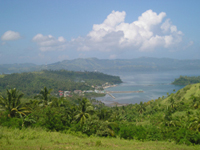 eeneries
richly endowed by mother nature is Zumarraga, a municipality peopled by
about twenty thousand
inhabitants. eeneries
richly endowed by mother nature is Zumarraga, a municipality peopled by
about twenty thousand
inhabitants.
It has a history that extends back to the Spanish
era. According to accounts, the towns started with a small settlement of
a few villagers
who came with their families on their fishing trips and
were overtaken by a stor m. They anchored and took refuge
in the place
then known as "Rawis". They found the place pleasing due to the presence
of bamboos. When they returned to settle, they named the place "Kawayan". m. They anchored and took refuge
in the place
then known as "Rawis". They found the place pleasing due to the presence
of bamboos. When they returned to settle, they named the place "Kawayan".
These early settlers became prosperous because of
the abundance of fish in the waters surrounding the island. This
attracted many people
from the neighboring places. News
of this rich
fishing village soon reached the knowledge of Moro pirates who pillaged Visayan waters. The village became a target of Moro raids so that the
natives built strong fortifications on top of a hill overlooking the
town to guard them from these attacks. These fortifications (Kamparnaryo
and
Santa Barbara) still stand today as relics for generations to behold.

No one could tell the
exact date when the
Spaniards came to the island, but in 1848, a Spanish friar set foot on
the place. However even before the coming of the
Spanish friars, the
natives were found to have organized their local governing body, obeyed
and followed the rules of the village. The name of the place was "Buad"
derived from the local dialect "Binuwaran", a term used to mean the
diggings made by a wild pig or boar. This was later officially changed
to "Zumarraga" in memory of the birthplace of the first Spanish priest
of the town, Rev. Fr. Martin de Yepes, Zumarraga is a town in
Spain,
where the Spanish friar was born.
On
March 13,
1863, the town became an independent parish by virtue of a decree from
the King of Spain. Consequently, a Diocesan decree was issued on
October 12, 1865 confirming the town a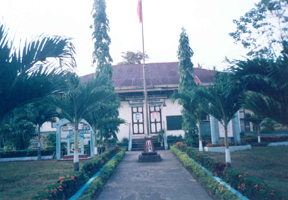 s a parish under a diocese.
The parish priest had original jurisdiction over the islands of Buad and
Daram, including Parasan. s a parish under a diocese.
The parish priest had original jurisdiction over the islands of Buad and
Daram, including Parasan.
The Spanish friars provided the educational,
spiritual, and moral upliftment of the natives. The people aspired for
proper education, lived peaceful Christian lives and continually
struggled for genuine happiness and dignity in life through farming and
fishing.
The town of Zumarraga has been known for quite a
number of years before some other towns in Samar were recognized,
because of its then flourishing fishing industry which attracted people
from neighboring towns and provinces such as the Zetas from Palo, Leyte;
the Astorgas from Barugo, Leyte; the Villaflors from Carigara, Leyte;
the Dazas, the Magas, the Narios from Catbalogan, Samar; the Carcellars,
Castillos, Costos, Versozas, and Zosas from different localities.
The immigrati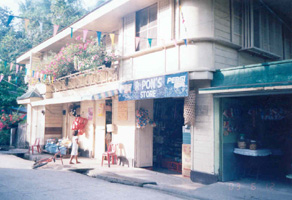 on of people from neighboring places
led to the growth of the population, ushering progress in industry and
business. The town eventually developed under a more organized political
leadership. Local town officials were appointed by the "gobernadorcillo"
duly anointed by the parish priest. Archival facts showed that Zumarraga
had the following "Capitanes" in order of succession; Tenorio Ferrer
(Capitan Toyang) , Nepomoceno Zeta (Capitan Simoy); Nicolas Custodio
(Capital Colas); Salvador Zeta (Capitan Badong); Tomas Bello, Hilario
Villaflor, and Agustin Astorga. on of people from neighboring places
led to the growth of the population, ushering progress in industry and
business. The town eventually developed under a more organized political
leadership. Local town officials were appointed by the "gobernadorcillo"
duly anointed by the parish priest. Archival facts showed that Zumarraga
had the following "Capitanes" in order of succession; Tenorio Ferrer
(Capitan Toyang) , Nepomoceno Zeta (Capitan Simoy); Nicolas Custodio
(Capital Colas); Salvador Zeta (Capitan Badong); Tomas Bello, Hilario
Villaflor, and Agustin Astorga.
The coming of the Americans provided the people
with a taste of democracy as elections were introduced. The chief
executive of the town was known as "Presidente". Accordingly, the
following were elected to the town's highest seat and rowed the oars of
Zumarraga: Mariano Maga (1910), Luis Villaflor (1911), Lucio Mijares
(1913), Leogardo Carcellar (1914), Enrique Nario (1916), and Rodrigo
Daza (1913). Emilio Zeta was elected to the Mayor's seat in 1936, and
Francisco Zosa served as Mayor during the Japanese occupation.
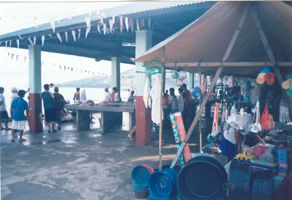
Significant efforts for pushing the limits of
progress were spearheaded by Zumarraga's most illustrious son, the
Honorable Pedro R. Arteche, who served in
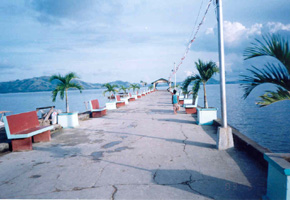 different capacities as
Congressman, as Delegate to the 1934 Constitutional Convention and as
Governor of Samar at the outbreak of war. The destruction after the war
made the town people highly resolved to reconstruct, to rebuild and to
make Zumarraga even better than it was before. Significant improvements
were undertaken such as cementing of streets, the establishment of a
Puereculture Center, the installation of a water system and electric
power plant, construction of a public market and school buildings. It
was during this rapid development that the wharf and part of the "Sea
Wall" were constructed. different capacities as
Congressman, as Delegate to the 1934 Constitutional Convention and as
Governor of Samar at the outbreak of war. The destruction after the war
made the town people highly resolved to reconstruct, to rebuild and to
make Zumarraga even better than it was before. Significant improvements
were undertaken such as cementing of streets, the establishment of a
Puereculture Center, the installation of a water system and electric
power plant, construction of a public market and school buildings. It
was during this rapid development that the wharf and part of the "Sea
Wall" were constructed.
Untiring efforts of able leaders grew in many
prosperous ways. Past mayors who served the town with dedication and
quantum boast from the post-war period to the present are: Canuto Lim
Sr., (1947); Dominador Bolok (1951); Francisco Castillo (1956);
Francisco Amoyo (1964); Primo Nario (1968); Canuto "Cesar" Lim Jr.
(1972-1979; 1986-November 4, 1994); Bibano Z. Letaba (1979-1986); Romulo
Dosal (November 5, 1994-June 30, 1995); Casilda Lim (1995-2001) and
currently, Neliptha M. Figueroa (2001 to present).

Consequently,
a few civic-spirited citizens established a private Catholic
high School
(St. Anthony's Institute) duly recognized by the government, and through
the generosity of the Zumarraganhons (ZUCIR), here and abroad, the Roman
Catholic Church which was built centuries ago has underwent yearly
re-constructional improvement with the able leadership of the Parish
Priest and the Parish Pastoral Council. The local high school has
produced a number of successful professionals including a retired
admiral of the Philippine Navy.
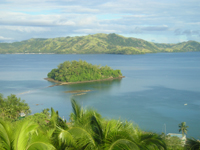 Zumarraga's patron saint, St. Anthony of
Padua has
continuously showered blessings and guidance on his
people who, in turn
have kept that sincere devotion. The town has relentlessly moved forward
to prosperity and hoped to have more successful sons and daughter who
would nourish and preserve the link from a struggling but determined
past to a hopeful and more progressive future. Zumarraga's patron saint, St. Anthony of
Padua has
continuously showered blessings and guidance on his
people who, in turn
have kept that sincere devotion. The town has relentlessly moved forward
to prosperity and hoped to have more successful sons and daughter who
would nourish and preserve the link from a struggling but determined
past to a hopeful and more progressive future.
Indeed
aside from continuing progress, the Zumarraganhons have always wished
that the town maintain its enthralling and enchanting ambience of
seaside living.

|
